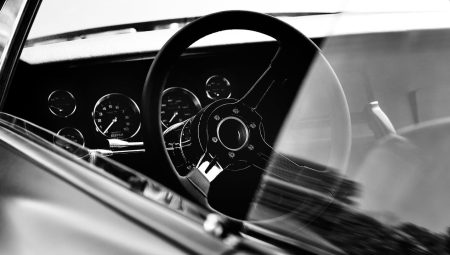Are you tired of that annoying rattling and shaking coming from your vehicle? It’s not just a nuisance; it can indicate deeper issues that could affect your ride’s comfort and performance. By investing in the right engine mount solutions, you can significantly reduce these vibrations and enhance your driving experience. Think of engine mounts as the unsung heroes of your vehicle, absorbing shocks and keeping everything in place. From rubber mounts to polyurethane options, each type has its unique benefits. Choosing the right one can be a game-changer, ensuring a smoother ride and prolonging the life of your engine. So, let’s dive into how you can tackle those pesky rattles head-on!
Understanding Engine Mounts
Engine mounts are the unsung heroes of your vehicle, quietly working behind the scenes to support the engine and absorb vibrations. Think of them as the cushions that keep your engine snug and secure, much like a comfy seat for a bumpy ride. These components are typically made from rubber or a combination of rubber and metal, designed to dampen the harsh vibrations generated by the engine. Without proper engine mounts, your vehicle would feel like it’s dancing on a rocky road, leading to an uncomfortable driving experience.
There are several types of engine mounts, including:
- Hydraulic mounts: These use fluid to absorb vibrations and are commonly found in modern vehicles.
- Solid mounts: These provide a more rigid connection and are often used in performance vehicles.
- Polyurethane mounts: These offer a balance between comfort and performance, reducing vibrations while providing stability.
Maintaining your engine mounts is crucial for the overall performance and longevity of your vehicle. Over time, wear and tear can lead to degradation, which may compromise not just comfort but also safety. Regular inspections can help identify issues before they escalate, ensuring a smooth and stable ride. So, keep an eye on those mounts—they’re more important than you might think!
Common Causes of Rattling and Shaking
Rattling and shaking in your vehicle can feel like a rollercoaster ride gone wrong, leaving you uneasy and questioning your car’s reliability. The causes of these unsettling sensations often boil down to a few key factors. First and foremost, worn engine mounts can lead to excessive vibrations, causing your engine to shift unexpectedly. This can feel like a bad dance partner—one minute you’re in sync, and the next, you’re stumbling. Other culprits include misalignment of components or mechanical issues that arise from neglect. Identifying these issues early can save you from costly repairs down the road.
To help you understand better, here’s a quick overview of common causes:
- Worn Engine Mounts: As time passes, engine mounts can deteriorate, losing their ability to absorb vibrations.
- Misalignment: If parts of your engine aren’t aligned correctly, it can lead to rattling noises that feel like a constant reminder of your car’s distress.
- Mechanical Problems: Issues like loose components or failing parts can exacerbate vibrations and rattling.
Recognizing these signs early can make a world of difference. So, keep an ear out for those strange noises and a feel for those unexpected shakes!
Signs of Worn Engine Mounts
Recognizing the is crucial for maintaining your vehicle’s performance and safety. If you’ve ever felt your car shake or rattle unexpectedly, it might be time to investigate. Here are some common symptoms to look out for:
- Excessive Vibrations: If your steering wheel vibrates or you feel unusual tremors while driving, worn engine mounts could be the culprit.
- Unusual Noises: Listen for clunking or banging sounds when accelerating or decelerating. These noises can indicate that the engine is shifting in its mounts.
- Misalignment: If your vehicle seems to pull to one side or the engine appears to be misaligned, it might be due to failing mounts.
Ignoring these signs can lead to further complications, such as decreased handling and stability, which can affect your overall driving experience. If you notice any of these symptoms, it’s wise to have your engine mounts inspected promptly to avoid more significant issues down the road.
Impact on Vehicle Performance
Worn engine mounts can dramatically affect your vehicle’s performance, leading to a driving experience that feels more like a roller coaster than a smooth ride. When these mounts fail, the engine is no longer securely held in place, causing it to shift during acceleration or deceleration. This can result in a loss of handling and stability, making it harder to control your vehicle, especially during sharp turns or sudden stops.
Moreover, the vibrations from a loose engine can travel through the chassis, affecting other components and leading to premature wear. For instance, you might notice:
- Increased noise: A rattling sound can become a constant companion.
- Vibration felt in the cabin: You may feel excessive shaking in the steering wheel or seat.
- Misalignment issues: Worn mounts can cause your wheels to become misaligned, impacting tire wear.
Ultimately, neglecting the condition of your engine mounts can lead to more severe mechanical problems, costing you time and money. So, if you start to notice these signs, don’t wait—addressing the issue early can keep your vehicle running smoothly and safely.
Consequences of Ignoring Issues
Ignoring the signs of worn engine mounts can lead to a cascade of problems that go far beyond just a little vibration. Think of your engine mounts as the unsung heroes of your vehicle; they absorb shocks and keep everything running smoothly. When these mounts fail, you might experience increased vibrations that can shake your vehicle apart, leading to more severe mechanical failures.
As the situation worsens, you could face issues like:
- Decreased Handling: Your vehicle may not respond as well to steering inputs, making it harder to control.
- Excessive Wear: Other components, such as the transmission or exhaust system, may suffer from increased stress, leading to costly repairs.
- Safety Hazards: Poorly mounted engines can affect braking and acceleration, posing risks on the road.
Ultimately, neglecting engine mount issues can lead to a significant drop in your vehicle’s performance and safety. Addressing these problems early on not only saves you from hefty repair bills but also ensures a smoother, more enjoyable ride.
Choosing the Right Engine Mounts
When it comes to , it’s like picking the perfect shoes for a big event. You want something that fits well, supports you, and can handle the pressure! First, consider the material. Engine mounts can be made from rubber, polyurethane, or even solid metal, each offering different levels of durability and vibration absorption. For instance, rubber mounts are great for everyday use, while polyurethane mounts provide enhanced performance for those who love to push their vehicles to the limit.
Next, think about the type of mount that suits your vehicle’s needs. There are
- OEM (Original Equipment Manufacturer) mounts
- Aftermarket mounts
- Performance mounts
Each type has its pros and cons, so weigh your options carefully. Compatibility with your vehicle is crucial—failing to choose the right fit can lead to further issues down the road, like increased vibrations or even damage to other components.
Lastly, don’t forget to consult your vehicle’s manual or a professional mechanic. They can provide insights tailored to your specific model, ensuring you make an informed decision. Remember, the right engine mounts not only enhance comfort but also boost your vehicle’s overall performance!
Maintenance Tips for Engine Mounts
Keeping your engine mounts in tip-top shape is essential for a smooth ride. Just like how a good foundation supports a sturdy building, engine mounts are the unsung heroes that absorb vibrations and keep your engine secure. Regular checks can save you from costly repairs down the road. So, how do you maintain these vital components? Start by inspecting them for cracks or excessive wear. If you notice any signs of damage, it’s time to consider replacement.
Additionally, cleaning the area around the mounts can prevent dirt buildup, which might lead to premature wear. It’s also wise to check the bolts for tightness; loose bolts can cause unwanted movement, leading to rattling. Create a maintenance schedule to inspect your engine mounts every 30,000 miles or so. If you’re unsure, consult a professional to ensure everything is in order.
Here’s a quick checklist for your engine mount maintenance:
- Inspect for visible cracks or damage.
- Clean the mounting area to prevent dirt accumulation.
- Check bolt tightness regularly.
- Follow a maintenance schedule for inspections.
By staying proactive with these maintenance tips, you can enhance your vehicle’s performance and extend the life of your engine mounts, ensuring a more comfortable driving experience.
Inspection and Replacement Schedule
Keeping your engine mounts in check is crucial for a smooth ride. Regular inspection can save you from costly repairs down the line. It’s recommended to inspect your engine mounts every 30,000 miles or at least once a year. During your inspection, look for signs of wear such as cracks or excessive movement. If you notice any of these issues, it might be time for a replacement.
But wait, don’t just take my word for it! Here’s a quick table to help you remember the key inspection points:
| Inspection Frequency | Signs to Look For | Action Required |
|---|---|---|
| Every 30,000 miles | Cracks, excessive vibrations | Inspect closely |
| Annually | Unusual noises, misalignment | Consider replacement |
Additionally, if you drive on rough roads frequently or tow heavy loads, you may want to check your mounts more often. A proactive approach not only enhances your vehicle’s performance but also ensures your safety on the road. Remember, neglecting these checks can lead to more serious mechanical problems, so stay vigilant!
DIY Maintenance vs. Professional Help
When it comes to maintaining your engine mounts, you might be wondering whether to roll up your sleeves for a DIY approach or call in the pros. Tackling this task yourself can save you some cash and give you a sense of accomplishment. However, it’s essential to weigh the pros and cons. For instance, if you have basic mechanical skills and the right tools, a DIY maintenance can be quite rewarding. You can inspect and clean your engine mounts, and even replace them if you’re feeling adventurous. But let’s be honest—sometimes, it’s better to leave things to the experts.
Professional mechanics bring experience and specialized tools that can make a world of difference. They can quickly diagnose issues that might be hidden to the untrained eye. Plus, they can often spot related problems that could save you from future headaches. So, how do you decide? Here’s a quick breakdown:
- DIY Maintenance: Cost-effective, hands-on experience, but requires time and some skill.
- Professional Help: Fast, reliable, and thorough, but can be more expensive.
Ultimately, it boils down to your comfort level and the complexity of the task. If you feel confident, go ahead and give it a shot. But if you’re uncertain, don’t hesitate to seek professional help. After all, keeping your vehicle in top shape is what truly matters!
Frequently Asked Questions
- What are engine mounts and why are they important?
Engine mounts are critical components that secure the engine to the vehicle’s frame. They help absorb vibrations and reduce noise, ensuring a smoother ride. Without proper engine mounts, you might experience excessive rattling and shaking, compromising your driving comfort.
- How can I tell if my engine mounts are worn?
Signs of worn engine mounts include excessive vibrations, unusual noises when accelerating, and misalignment of the engine. If you notice these symptoms, it’s crucial to inspect your mounts to avoid further mechanical issues.
- Can I replace engine mounts myself?
Yes, replacing engine mounts can be a DIY project if you have the right tools and experience. However, if you’re unsure or lack the necessary skills, it’s best to seek professional help to ensure the job is done correctly.
- How often should I inspect my engine mounts?
It’s recommended to inspect your engine mounts at least once a year or whenever you notice any signs of wear. Regular checks can prevent more significant issues and enhance your vehicle’s performance.





